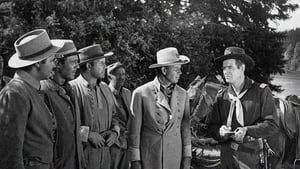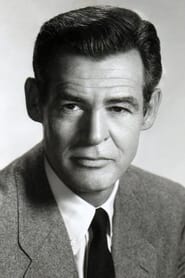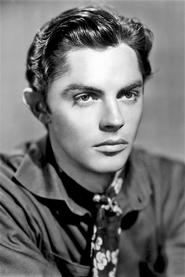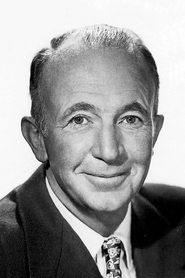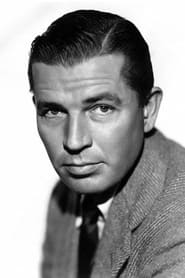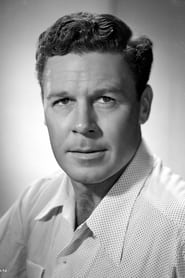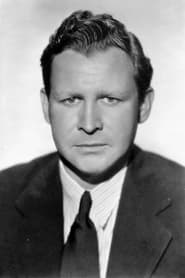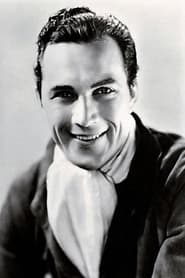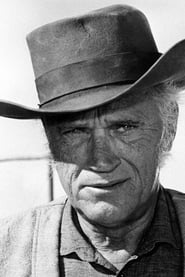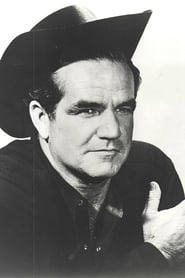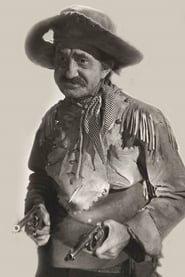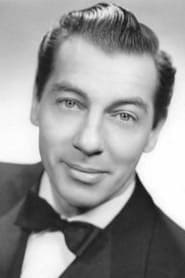Cast
View AllRobert Ryan
as Jeff Clanton
Claire Trevor
as Lily
Jack Buetel
as Bob Younger
Robert Preston
as Matthew Fowler
Walter Brennan
as 'Doc' Butcher
Bruce Cabot
as Cole Younger
John Archer
as Curley Ringo
Lawrence Tierney
as Jesse James
Barton MacLane
as Joad
Tom Tyler
as Frank James
Robert J. Wilke
as Jim Younger
John Cliff
as John Younger
Lee MacGregor
as Lieutenant Blaine
Emmett Lynn
as Oscar
Carleton Young
as Wilson
Crew
Director
- William D. Russell
Producer
- Herman Schlom
Reviews
John Chard
Quantrill Raiders Ride Again!
Best of the Badmen is directed by William D. Russell and written by John Twist and Robert Hardy Andrews. It stars Robert Ryan, Claire Trevor, Robert Preston, Walter Brennan, Bruce Cabot, John Archer and Jack Buetel. It's a Technicolor production with cinematography by Edward Cronjager and music by Paul Sawtell.
"This story tells a forgotten chapter in the violent history of the West. Months after the tragic war between The States had ended there was still no peace on the Western Frontier."
William Russell's Western is an energetic entry into the pantheon of Oaters, it's one that involves the often filmed topic of the Jayhawkers or Bushwhackers who roamed the West causing hurt and pain in the aftermath of the Civil War. Best of the Badmen ropes in the brothers James and Younger, a few other scalawag types (Curly Ringo/Doc Butcher) and gives them a leader in the tall form of Robert Ryan's Jeff Clanton. How and why Clanton, and ex Union Major, joined the Confederate guerrilla unit? Is a nifty bit of story telling that adds a vengeful bite to what otherwise could have been standard B Western formula.
Once motives and character traits are established, film goes about its business with guts and determination. A fight, a pursuit or a sneaky act is never far from the plot, there's even a romantic thread that's not over stretched, allowing the splendidly attired Miss Trevor as the estranged Lilly Fowler to light up the screen. The narrative has some smarts about it, Clanton and his gang are out to ruin "The Fowler Agency" (an obvious nod to the Pinkerton Agency) which is run by dastardly Matthew Fowler (Preston), but although Clanton wants revenge on Fowler, he's still a good guy at heart and will not let his gang become murderous terrorists. Honour among thieves? Yes indeed, but of course it's not going to be all plain sailing when the group is full of such strong personalities.
Although clearly not an "A" list Western, the cast assembled is approaching "A" list quality. Ryan (The Naked Spur/The Day of the Outlaw/The Wild Bunch) in the genre speaks for itself, but he's also surrounding by an assortment of fine Western and film noir character actors. Preston (This Gun for Hire/Blood on the Moon), Trevor (Key Largo/Man Without a Star) and Brennan (Red River/My Darling Clementine), all deliver the expected committed performance. One of the film's weaknesses is under using some of the secondary performers, especially Lawrence Tierney (Dillinger/Born to Kill), who as Jesse James only gets a couple of lines! However, Bruce Cabot (King Kong/Fury) and John Archer (White Heat) do get to earn their pay. Rounding out the noticeable bad guys are Robert Wilke (High Noon/Night Passage), Jack Buetel (The Outlaw), Tom Tyler (Blood on the Moon) and John Cliff (River of No Return).
There's some distracting back screen work within the piece, and Cronjager's photography never gets a chance to shine, the latter not helped by a standard print of the film that needs a good scrub up. But the cast, story, action and execution of said story, definitely make this a better than average Western. 7/10
Feb 10, 2017
Thematic Analysis
Best of the Badmen represents a fascinating example of Western cinema, offering viewers a unique perspective on the human experience and societal structures. The film's approach to its themes demonstrates a creative vision that distinguishes it within its genre.
Director William D. Russell brings their distinctive visual style to this film, continuing their exploration of themes seen in their previous works while adding new elements. Their approach to pacing and visual storytelling creates a viewing experience that rewards close attention.
Released in 1951, the film exists within a cultural context that now offers viewers historical perspective on the social issues of that era. Its reception demonstrates the diverse reactions to its artistic choices and its place in cinema history.
Did You Know?
- The production of Best of the Badmen took approximately 12 months from pre-production to final cut.
- The final cut of the film runs for 84 minutes, though the director's initial assembly was reportedly 144 minutes long.
- The director insisted on using practical effects whenever possible, reserving CGI for only the most necessary scenes.
- Some visual effects sequences took up to 11 months to complete.
- The costume department created over 146 unique costume pieces for the production.
Historical Context
- In 1951, when this film was released:
- Rock and roll music was revolutionizing popular culture.
- The Cold War was intensifying, influencing global politics and culture.
- The film industry was dominated by major studios, with independent cinema still in its early development.
How This Film Stands Out
While Best of the Badmen shares thematic elements with other films in its genre, it distinguishes itself through its unique approach to storytelling, visual style, and character development.
Unlike Guns of the Timberland, which takes a more conventional approach to its subject matter, Best of the Badmen offers a fresh perspective through its innovative visual language and narrative structure.
While films like Cheyenne Cowboy and The One Way Trail explore similar territory, Best of the Badmen stands apart through its distinctive directorial vision and pacing.
This film's unique contribution to cinema lies in its thoughtful balance of entertainment value and thematic depth, making it a valuable addition to its genre.
Details
- Release Date: August 9, 1951
- Runtime: 1h 24m
